#sacoglossa
Text
Taxonomy Tournament: Gastropods
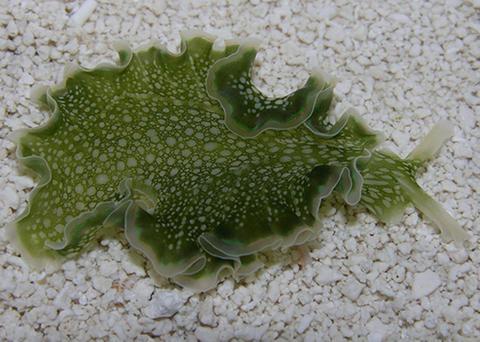

Sacoglossa. This superorder is made up of solar-powered sea slugs, which ingest the insides of algae cells. This allows some of them to perform photosynthesis using stolen chloroplasts, the only animals to do so.
Stylommatophora. This order is made up of air-breathing land snails and slugs, including the garden snail, great grey slug, Roman snail and banana slug
#animals#biology#polls#poll tournament#zoology#sea slugs#solar powered sea slugs#gastropods#molluscs#spiralia#slugs#snails#Sacoglossa#Stylommatophora#0x5v0x3a
69 notes
·
View notes
Text
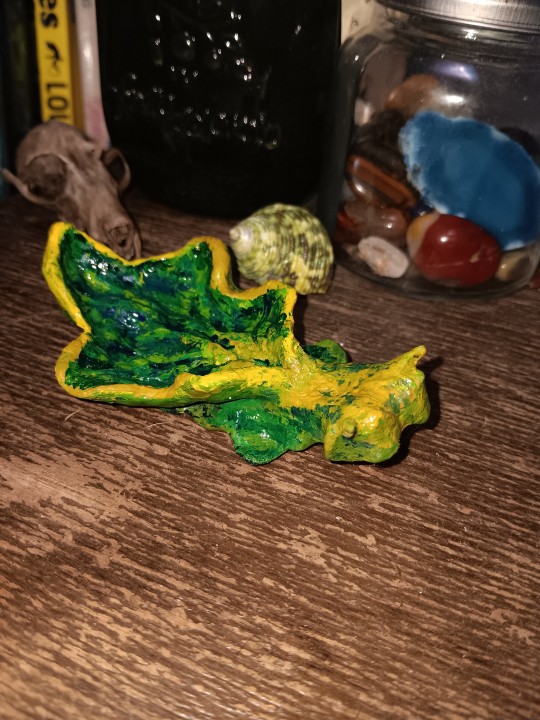

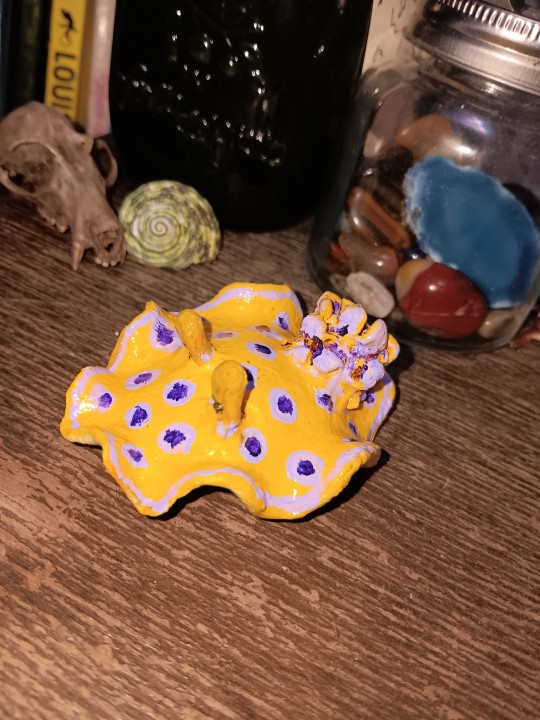

~•☆°~ Sculptin Slugs ~°☆•~
☆ Elysia chlorotica
☆ Glaucys marginatus
☆ Goniobranchus geminus
☆ Nembrotha kubaryana
81 notes
·
View notes
Text

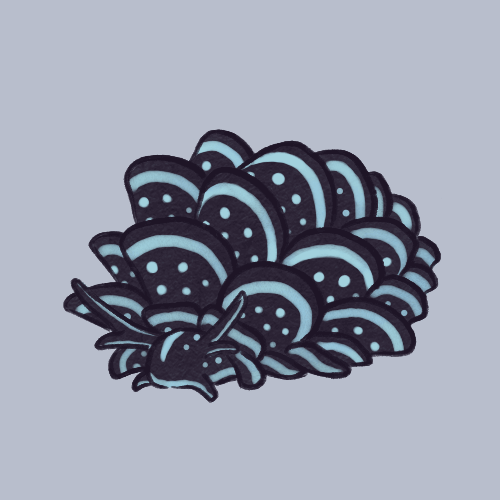
Cyerce Nigricans
Free for personal use; repost with credits
Saw a video of one of these little creatures the other day and couldn’t resist attempting a little animation project.
It could be improved; I probably should have drawn more frames to make the motion smoother, but I think I’m satisfied for now.
And then I took creative liberties and did a blue version just because.
#art#illustration#artists on tumblr#my art#cute art#pastel art#animation#2d animation#gif#sea slug#cyerce nigricans#sacoglossa#sea creatures#marine life#gastropods
120 notes
·
View notes
Text

Lettuce sea slug (Elysia crispata)
Photo by Mac Stone
#lettuce sea slug#elysia crispata#elysia#sea slug#lettuce slug#gastropods#mollusks#slugs#sacoglossa#sacoglossum#marine animals#marine#marine life#green#green slugs#animals#wildlife#nature
182 notes
·
View notes
Text


Sacoglossan sea slugs in Elysiidae, Elysia ornata (1) and Elysia rufescens (2). Rubble Pile, 2/11/2024.
30 notes
·
View notes
Text

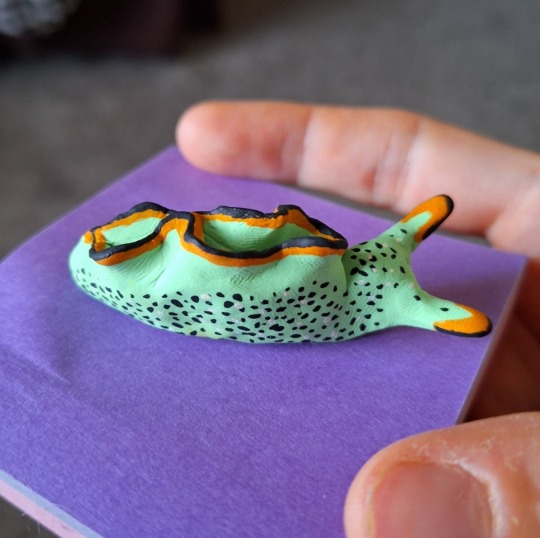
Elysia marginata! They can autotomize (self-amputate) their heads and regenerate a new body (and heart!) within 20 days!
Thanks to @autitm for the suggestion to kick off my sea slug creations 😁
14 notes
·
View notes
Text


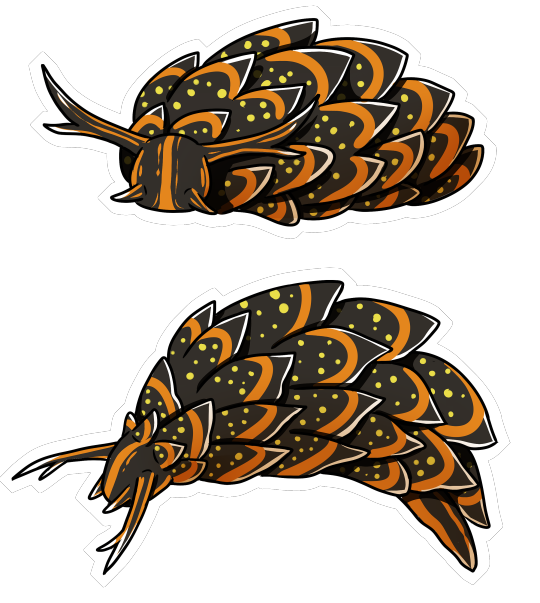


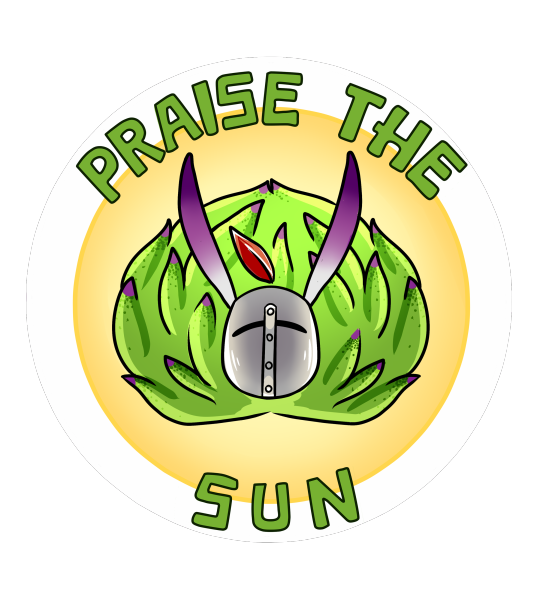
Six sets of Sacoglossa stickers! These are sea slugs, also named solar-powered sea slugs are able to photosynthesise! The mascot of this superorder is the sea bunny with their vibrant green bodies and pink rosy cheeks
Each pack will have a little information card and fun facts about these cuties.
Have put a lot of time and passion into these and hope you all like them as much as I do :)
#artists on tumblr#art business#small business#australian artist#digital art#making stickers#sacoglossa#sea slugs#solar powered sea slugs#nudibranchs#ocean life#marine animals#marine life#nudibranch stickers#sticker designs#etsy small business#etsy store#sea sheep#leaf sheep#sea bunnies
31 notes
·
View notes
Text
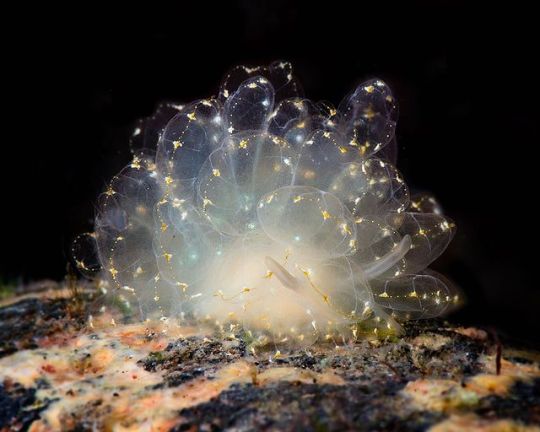
Cyerce elegans
#Cyerce elegans#sea slug#Gastropoda#Heterobranchia#Opisthobranchia#Sacoglossa#Plakobranchacea#Limapontioidea#Caliphyllidae#Cyerce#upl
18 notes
·
View notes
Text


looks at this fella. worlds cutest underwater dust bunny
13 notes
·
View notes
Text

E is for Elysia Chlorotica, the solar-powered sea slug
Just as eating shrimp turns flamingos pink and eating too many carrots will turn you orange (a process called carotenosis), the eastern emerald elysia get their green color from algae. But they also take the Kirby approach of absorbing the algae’s power of photosynthesis. To do this, they slurp the algae up and digest all but the chloroplasts. They then keep the chloroplasts alive and incorporate them into their own cells. The chloroplasts continue operating as usual, photosynthesizing for their new host. This is called kleptoplasty.
Much like with Cadlina Laevis, I hope to return to Elysia one day to better represent her indescribable beauty. Designing her dress took far longer than it should have and really brought to light the limitations of vector art and my lack of experience as an artist. I didn’t end up using either of these vintage dresses for Queen Elysia, but I wanted to share them anyway as I may not use them for future Alphabet Superset cards. This beaded gown looked perfect due to the similarities to the sparkles of elysia chlorotica, but I wanted to pay homage to the 1960s trend of the ruffled collar. I don’t have any other animals planned that I think the ruffled collar would fit except elysia. I tried to replicate this dress but it actually broke my brain. Then my document overwhelmed Inkscape to the point of crashing multiple times and I lost some progress that I didn’t feel like redoing. She ended up with a scalloped collar instead.
Last time, I talked about struggling with motivation. I’ve been trying to curb my avoidance by coming up with another long-term project like the Alphabet Superset challenge that I can turn to when I lose steam. I know it sounds like a ticket to burnout, but I think having permission to procrastinate with a specific project will help keep me invested in the things that I have committed to. The blessing of having a miniscule following is that I can post without worrying that I’ll upset anyone by breaking my established pattern. For those of you with creative blogs like art or writing, what do you wish you could experiment with but are afraid to do so?
Next Week’s Sneak Peek:
Flying fish, and finally our first spade!
#alphabetsuperset#1960s fashion#frutiger aero#inkscape#vector art#character design#robot oc#playing cards#sea slug#elysia chlorotica#photosynthesis#mollusc#sacoglossa#Solar power#shrek#60s
6 notes
·
View notes
Photo

Kim Tae-hee, Rain Ends Disagreement Sacoglossa
Source: k-star-holic.blogspot.com
1 note
·
View note
Text
Taxonomy Tournament: Gastropods


Sacoglossa. This superorder is made up of solar-powered sea slugs, which ingest the insides of algae cells. This allows some of them to perform photosynthesis using stolen chloroplasts, the only animals to do so.
Hygrophila. This clade is made up of air-breathing freshwater snails, including pond snails and bubble snails
#animals#biology#polls#poll tournament#zoology#sea slugs#solar powered sea slugs#gastropods#molluscs#spiralia#snails#Sacoglossa#Hygrophila#0x6v0x79
63 notes
·
View notes
Text
you would all be getting a very long ramble about sea slugs right now if it wasn't 4am and i wasn't very very tired. i just need you all to imagine i am showing you awesome images of sea slugs and pulling out words like cerata, rhinophores, and sacoglossa
205 notes
·
View notes
Text
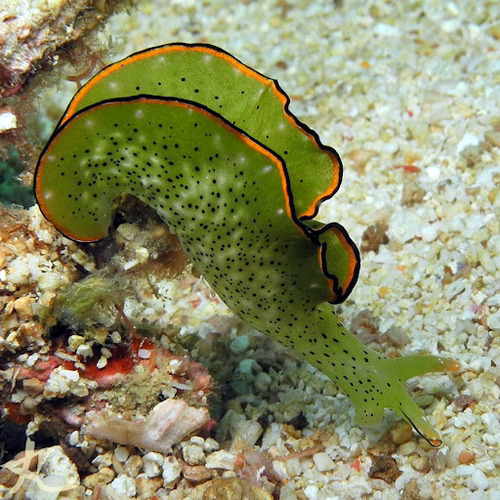

Ornate Sapsucking Slug (Ornate Elysia)
Elysia ornata is a sea slug in the Family Plakobranchidae (Order Sacoglossa). Its body is a translucent leaf-green in color with speckles of white and black. The parapodial margin is black with a yellow or orange submarginal band. The green rhinophores are usually black-tipped, but can also have orange bands (as shown)..
It is also known as Ornate Leaf Slug. They feed on green algae (Bryopsis sp.), and reaches a length of 5cm.
This species is circumtropical and can be found both in the Caribbean and the Pacific Ocean..
20 notes
·
View notes
Text
Meet the…

SEA SHEEP!
Costasiella kuroshimae, aka the leaf slug, sea sheep, and loads of other names, is a type of sacoglossan sea slug!
Scientific Classifications:
Kingdom: Animalia
Phylum: Mollusca
Class: Gastropoda
Clade: Heterobranchia
Informal Group: Opisthobranchia
Clade: Sacoglossa
Clade: Plakobranchacea
Superfamily: Limapontioidea
Family: Costasiellidae
Genus: Costasiella
These little cuties are around Japan, the Philippines, and Indonesia! They are capable of photosynthesis via a process called kleptoplasty, where they retain the chloroplasts from the algae they eat.
Their lifespan is between 6 months to a year. They are 5 millimeters to 1 centimeter
68 notes
·
View notes
Text
so i went to read about nudibranchs on wikipedia and immediately got distracted going down the link rabbit hole of "Sacoglossan" sea slugs (often confused with nudibranchs) and im just gonna c/p some of the wikipedia about them -
Sacoglossa, commonly known as the sacoglossans or the "solar-powered sea slugs", are a superorder of small sea slugs and sea snails, marine gastropod mollusks that belong to the clade Heterobranchia. Sacoglossans live by ingesting the cellular contents of algae, hence they are sometimes called "sap-sucking sea slugs".
...
Some sacoglossans simply digest the fluid which they suck from the algae, but in some other species, the slugs sequester and use within their own tissues living chloroplasts from the algae they eat, a very unusual phenomenon known as kleptoplasty, for the "stolen" plastids. This earns them the title of the "solar-powered sea slugs", and makes them unique among metazoan organisms, for otherwise kleptoplasty is known only among single-celled protists.
...
Also known as chloroplast symbiosis, kleptoplasty is the energy-providing mechanism that gives the Sacoglossan’s the nickname, “solar-powered sea slugs”, and E. crispata the name, “lettuce sea slug.” As algal food is being digested, the chloroplasts are absorbed into the cells lining the digestive tract and up into their parapodia. How many chloroplasts the slug sequesters and the length of retention depends on the individual species of slug. Chloroplast retention in E. crispata tends to last around 40 days. Given the variation in their diet, chloroplasts from different algal species have been found to be taken up into the same cells, functioning normally alongside the other.
tl;dr these sea slugs eat algae and store their chloroplasts for months to photosynthesize for them when food is scarce; sacoglossan sea slugs are the only multicellular organisms known to do this (if I understand correctly 😅)
..
ik everyone probably knows about them but im in love rn so anyways here's some pics!
(forgive that I didnt pay attention to the specific species when grabbing pics)
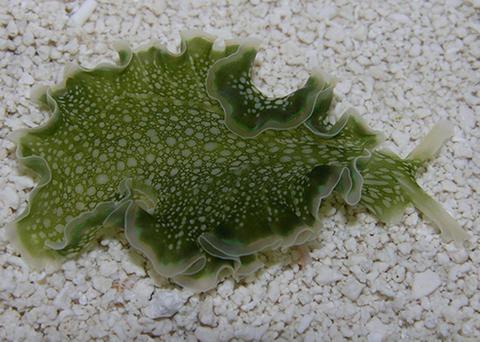






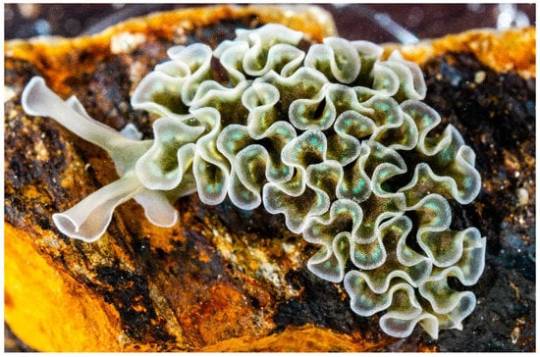
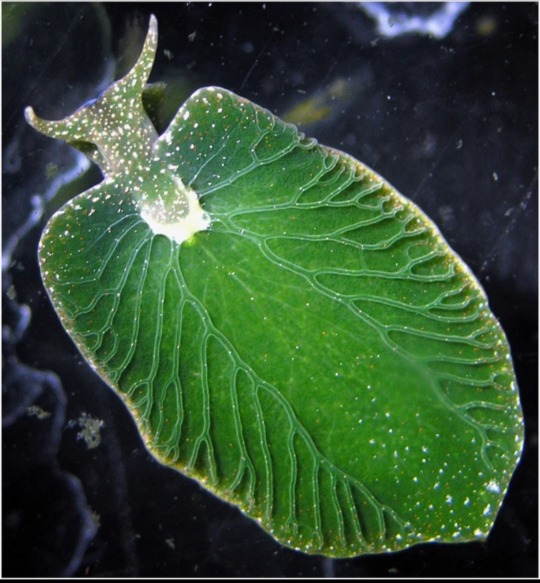
oh to be a sea slug eating sunlight in the ocean 🩵💚💙
#idk they just made me really happy#ik ive seen pics of lots of them but never rlly knew about the photosynthesis thing#which is AWESOME there's smth slightly above my head here about lateral gene transfer which is fascinating#there was smth special abt i think the lettuce sea slug in particular#bc multiple species of algae chloroplasts were working TOGETHER in them#idk im not smart or sober enuff to get into it#i just love these slugs#FINALLY LET ME POST IT GOD
13 notes
·
View notes